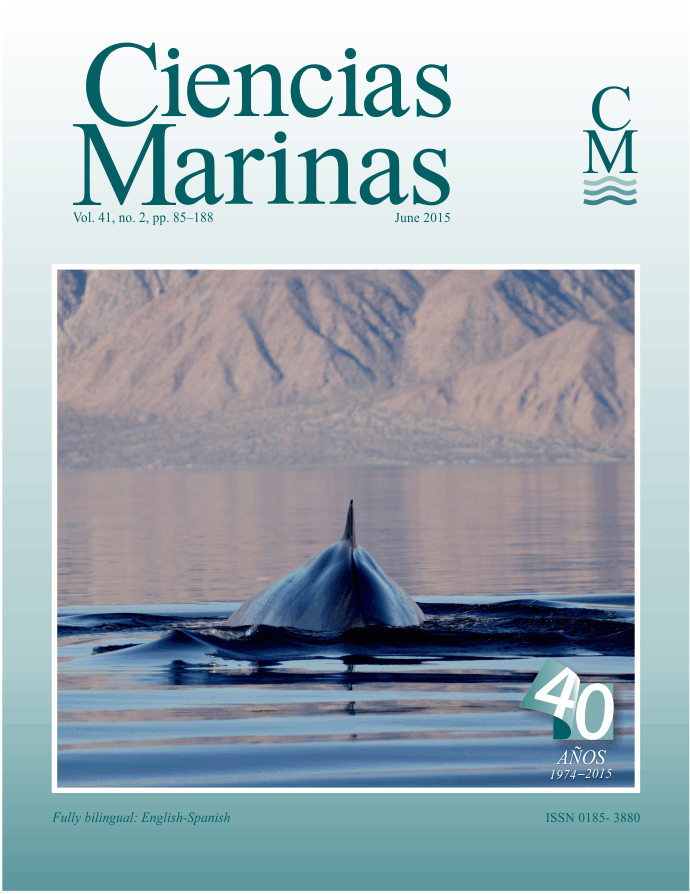Spatial and temporal occurrence of fin whales (Balaenoptera physalus) and euphausiids (Nyctiphanes simplex) in the Ballenas Channel, Gulf of California, Mexico
Main Article Content
Abstract
Fin whales (Balaenoptera physalus) are observed year-round in the Ballenas Channel and Bahía de los Ángeles region, Gulf of California, where their main food item is the euphausiid Nyctiphanes simplex. This investigation was designed under the hypothesis that the spatial and temporal occurrence of whales and euphausiids coincides. The aim was to establish the geographic, seasonal, and interannual changes in the abundance of the fin whale and its main prey in the region during 2003 and 2004. Four field trips were carried out per year. Surveys to search for whales and carry out horizontal surface tows were conducted from small boats. Fin whales and euphausiids were mainly observed off the coast of Baja California and in the southern Ballenas Channel. Their abundance varied significantly from one season to another in both years. The highest relative abundance of whales occurred in July (warm season), followed by June (cold–warm transition period) and March–April (cold season), and the lowest in October (late warm season). Euphausiid abundance was significantly higher in June (cold–warm transition period), followed by July (warm season). There was no direct correlation between weekly abundances of both species, probably because whale peak abundance occurred four weeks later than euphausiid peak abundance. Fin whale relative abundance was significantly higher in 2004 than in 2003 (2.22 and 0.46 whales h–1, respectively), but euphausiid abundance remained almost the same (geometric means 255 and 174 ind/1000 m3). Even though there was no weekly correlation between both species, their geographic distribution did overlap.
Downloads
Article Details
This is an open access article distributed under a Creative Commons Attribution 4.0 License, which allows you to share and adapt the work, as long as you give appropriate credit to the original author(s) and the source, provide a link to the Creative Commons license, and indicate if changes were made. Figures, tables and other elements in the article are included in the article’s CC BY 4.0 license, unless otherwise indicated. The journal title is protected by copyrights and not subject to this license. Full license deed can be viewed here.

